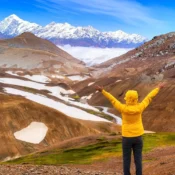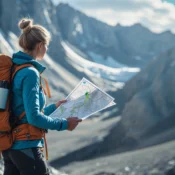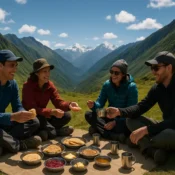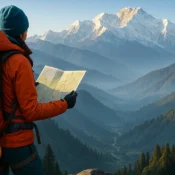
Essential Packing Tips and Complete Checklist for Trekking in Sikkim
Trekking in Sikkim is an experience of a lifetime, offering breathtaking Himalayan vistas, rhododendron forests, and sightings of majestic peaks like Kanchenjunga. However, high-altitude treks in this region demand proper planning and the right gear to ensure both safety and comfort. This comprehensive packing guide is tailored for trekkers heading to Sikkim’s high altitudes—including the popular Goechala, Sandakphu-Phalut, and Singalila treks. Whether you’re going with a guided tour or trekking independently, the following tips and checklist will set you up for success.
Overview: Trekking Logistics in Sikkim
For most professionally organized treks in Sikkim, travel operators provide tents, mattresses, and sleeping bags. However, if you own high-quality, tried-and-tested sleeping bags, tents, or mattresses—and you prefer using your personal gear—you are welcome to bring them. Otherwise, the standard-issue provided gear is generally sufficient for the region’s cold and demanding environment.
Ultimate High-Altitude Trekking Packing List for Sikkim
To maximize comfort, safety, and ease while trekking at altitude, packing light and smart is crucial. Layering is the golden rule due to the region’s rapidly shifting weather—sunny mornings can quickly turn into windy afternoons or cold, wet evenings.
1. Clothing Essentials
Layered Approach
- Thermal Innerwear (top and bottom): Crucial for insulation.
- Quick-dry T-Shirts (2-3, full sleeves preferred): Avoid cotton—opt for synthetic blends or merino wool.
- Fleece Jacket or Sweater: Warm and lightweight, perfect as a mid-layer.
- Down or Holofil Jacket: An absolute necessity at high camp and in the evenings. Not optional in high altitudes.
- Waterproof/Windproof Shell Jacket: Preferably Gore-Tex or equivalent, for protection against wind, rain, or snow5.
- Trekking Pants (2 pairs): Quick-dry or synthetic, with one pair reserved for camp.
- Thermal/Insulated Pants: For evenings/nights.
- Windproof/Rainproof Over-Pants: Keeps you dry in unpredictable Himalayan rain or snow.
- Woolen Cap/Beanie: For warmth at night and during chilly mornings.
- Sun Hat or Cap: Wide-brimmed for day use.
- Scarf or Neck Gaiter/Buff: Protects against cold winds and dust.
- Gloves: One light pair for day use and one insulated pair for cold conditions.
Socks & Footwear
- Trekking Socks (3-4 pairs): Preferably wool or synthetic blends—never cotton.
- Woolen Socks (at least 1 pair): For extra warmth at night.
- Waterproof Trekking Shoes/Boots: High ankle support is essential.
- Sandals/Slippers: For camp use and giving your feet a break.
2. Gear and Equipment
- Backpack (50–70L with rain cover): For all personal gear.
- Daypack (20–30L): For carrying water, snacks, rain gear, and essentials during daytime hikes.
- Rain Cover: For both backpack and daypack—weather is unpredictable at altitude.
- Trekking Poles: A pair provides balance and reduces knee strain on uneven trails.
- Headlamp (with spare batteries): Hands-free lighting is a must.
- Water Bottles (2 x 1L) or Hydration Bladder: Staying hydrated is non-negotiable, especially for acclimatization.
- Thermos Flask: Keeps liquids hot at high altitudes.
- Extra Ziplock Bags/Dry Bags: For electronics, laundry, or separating wet/dirty clothes.
Optional (But Useful) Gear
- Quality Sleeping Bag: If you prefer your own (rated for at least –10°C or lower).
- Gaiters: Keep snow and mud out of boots.
- Sleeping Bag Liner: Adds warmth and improves hygiene.
- Camera & Accessories: If you wish to capture the scenery—but keep weight minimal.
- Sunglasses (UV-protected): Himalayan sun can be harsh, even on cloudy days.
- Sunblock Lotion & Lip Balm: SPF 30+ is advisable.
3. Personal Items & Hygiene
- Basic Toiletries: Toothbrush/paste, biodegradable soap, small quick-dry towel (avoid bulky towels), comb, and feminine hygiene products if needed.
- Toilet Paper/Wet Wipes: Treks typically have limited amenities.
- Hand Sanitizer: For personal hygiene wherever water is unavailable.
- Small First Aid Kit: Band-aids, disinfectant, blister treatment, painkillers, and altitude-related medication (such as Diamox after consulting your doctor).
- Personal Medications: Carry doctor-prescribed medicines for AMS, allergies, or chronic conditions.
- Nail Clipper and Small Sewing Kit: Fix minor problems or injuries on the trail.
4. Documents & Miscellaneous
- Government-Issued ID: Passport and multiple passport-sized photos (for permits and checkposts).
- Permits & Certificates: Sikkim trekking permits are mandatory—carry originals and copies.
- Cash: ATMs are rare in mountain regions; bring sufficient cash for the trek.
- Small Notebook & Pen: To jot down experiences or emergency info.
Sikkim High Altitude Trekking: What NOT to Get
Packing light is vital; here are the common mistakes to avoid:
- No Bulky Extras: Don’t pack for every “what if”—stick to essentials for safety and warmth.
- Limit Toiletries & Medicines: Don’t bring excessive amounts—one tube of sunscreen or a shared medical kit for a group will suffice.
- Avoid Multiple Accessories: Ditch make-up kits, jewelry, and unnecessary electronics9.
- Leave Extra Footwear: Only one sturdy trekking boot and a light slipper for camp is enough.
- No Heavy Towels: Take only a thin, quick-dry towel.
- No Bulky Power Banks: Bring only the capacity you’ll realistically use. Solar chargers may help, but only if needed.
- Food: Operators provide meals; carry minimal personal snacks (nuts, dry fruits, or energy bars).
What to Keep in Mind: Trekking in Sikkim
Safety and Health
- Acclimatization is Critical: Ascend gradually, stay hydrated, and know AMS symptoms (headache, nausea, breathlessness).
- Keep Backpack Light: Ideally, 8–10kg for all essentials.
- Layer, Don’t Bulge: Instead of packing multiple thick items, pack light, technical layers for flexibility.
- Stay on the Marked Trail: Always follow authorized trekking paths—this minimizes ecological disturbance and protects fragile environments.
Weather Tips
- Be Ready for Sudden Changes: The Himalayas are notorious for rapid weather shifts. Always keep rain and wind protection easily accessible.
- Pre-Trip Prep: Test all gear before departure—especially boots and jackets.
- Waterproofing: Use dry bags or liners inside backpacks for electronics and clothing.
Environmental Responsibility
- No Littering: Carry all waste, including toilet paper, to the next bin or campsite14.
- Biodegradable Products Only: Choose eco-friendly soaps and detergents.
- Respect Local Customs: Dress modestly near villages and monasteries, and seek permission before photographing locals.
Documentation and Permits
- Sikkim Permits: Most high-altitude treks require Inner Line Permits (ILP) and trekking permits, arranged via operators or government offices. Keep both digital and paper copies12.
High-Altitude Trekking Sikkim Packing Checklist Table
| Section | Essential Items | Quantity/Notes |
|---|---|---|
| Clothing | Thermal base layer | 1–2 sets |
| Quick-dry t-shirts (full sleeve) | 2–3 | |
| Fleece jacket or sweater | 1 | |
| Down jacket | 1 (not optional) | |
| Waterproof/windproof jacket and pants | 1 set each | |
| Trekking pants | 2 | |
| Woolen socks | 1–2 pairs | |
| Trekking socks (synthetic/wool blend) | 2–3 pairs | |
| Woolen cap, sun hat, buff/scarf | 1 each | |
| Gloves (light + insulated) | 1 pair each | |
| Camp slippers/sandals | 1 pair | |
| Trekking boots (waterproof) | 1 pair, well broken-in | |
| Equipment | Backpack (50–70L) w/rain cover | 1 |
| Daypack (20–30L) w/rain cover | 1 | |
| Trekking poles | 1–2 | |
| Headlamp + batteries | 1 | |
| Water bottles/hydration bladder | 2L total | |
| Sleeping bag (if personal preferred) | 1, rated for –10°C or lower | |
| Sunglasses (UV-protected) | 1 | |
| Ziplock/dry bags | a few, assorted sizes | |
| Hygiene/First Aid | Quick-dry towel | 1 |
| Basic toiletries, toilet paper, wet wipes | 1 kit | |
| Hand sanitizer, sunscreen, lip balm | As required | |
| First aid kit/Personal medicines | 1 small kit + all required medicines | |
| Documentation | ID, permits, passport photos | Keep extras |
| Cash, notebook, pen | Sufficient for trek duration | |
| Miscellaneous | Camera, power bank | Optional, light only |
| Nail clipper, sewing kit | 1 each |
Final Thoughts
Proper packing ensures a safer, more enjoyable trekking experience in Sikkim’s stunning high-altitude wilderness. Remember:
- Tents, sleeping bags, and mattresses are arranged by operators, but bring your own only if you trust their quality and warmth.
- Pack light, pack smart, and resist the urge to bring unnecessary extras—every kilogram counts!
- Respect the Himalayas by leaving no trace and supporting sustainable travel at every step.
With the above packing tips and checklist, you’re ready to experience the wonders of trekking in Sikkim—prepared, protected, and confident to embrace the adventure ahead.
Other useful Info




